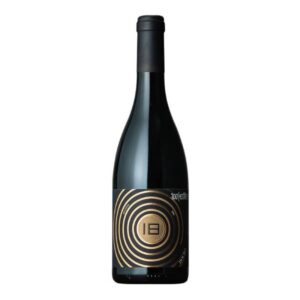Pêra Manca Red 2005 75cl
780,00 €
Made from the usual Trincadeira and Aragonez grape varieties, harvested from selected plots in the Eugénio de Almeida Foundation's vineyards over 35 years old, Pêra-Manca Red 2014 has a deep garnet color. With an intense and complex aroma of wildflowers and raspberry, balsamic notes, pine and resin, white chocolate and linden. In the mouth it impresses from the first impact with its freshness. Elegant and very concentrated, it presents robust tannins that will ensure a great capacity for evolution.
Pêra-Manca is the brand that the Eugénio de Almeida Foundation assigns to its exceptional wines. Red wines are produced from the Trincadeira and Aragonez grape varieties. These are full-bodied, complex and elegant wines, with an aroma of raisin fruits and essences of aging wood. Due to the high quality of the tannins and wood used, these are wines that have great longevity, requiring some time to reveal their full potential.
The Pêra-Manca Red 2005 wine was elected one of the 30 best and most desired wines in the world, achieving an outstanding 9th place in the 2019 edition of the prestigious Wine Style Award. This award is also recognition of the exceptional, distinct and even exclusive characteristics of Alentejo as a wine region, which the Eugénio de Almeida Foundation is proud to preserve in all its wines. The distinction was made by Vivino, the most important and most downloaded wine app in the world and its choices are powered by more than 35 million users.
1 in stock
Description

Behind Adega Cartuxa is a large family, the Eugénio de Almeida family. Let's go back to 1913, the year in which Vasco Maria was born, into one of the most influential families of the 19th century. Born in Lisbon, he soon established ties with Évora and Alentejo, where the family had an extensive heritage. Vasco Maria always considered people as the most valuable variable around which he organized all his efforts. Among them, the revitalization of wine-growing activity and the investment in the planting of a vast area of olive groves just a few kilometers from Évora stand out, which resulted in the wines and olive oils still produced today.
According to tradition, the name of Pêra-Manca derives from the toponymic “stone lame” or “oscillating stone” – a granite formation of rounded blocks, unbalanced on firm rock.
History associates this name with the friars of the Convent of Espinheiro, in Évora, who owned, in the 15th and 16th centuries, vineyards located in a place with many loose granite stones, which swayed.
Its wines would be very famous at the time, to the point that Pedro Álvares Cabral took some barrels on the expedition to discover Brazil.
This would be the wine, shared with the indigenous people, that Pero Vaz de Caminha talks about in one of his letters.
The story goes that the tradition of Pêra-Manca wine dates back to the Middle Ages. The story also goes that around 1365, Our Lady appeared on top of a thorn bush to a shepherd. A few years later, an oratory was built in his honor and in 1458, given the growing importance of the place as a pilgrimage point, a church was built. The subsequent foundation of a Convent, which would house the Order of St. Jerome, followed. And, in the 15th and 16th centuries, the Pêra-Manca vineyards were owned by the friars of the Convento do Espinheiro, in Évora.
In 1517, the friars of the Convento do Espinheiro were forced to lease these vineyards – as they were very expensive to manage – to Álvaro Azedo, squire of the King and his wife, Filipa Rodrigues. D. João II speaks of them, in a letter to the Évora City Council.
It was recovered in the 19th century by the prosperous Casa Soares, owned by Councilor José António d'Oliveira Soares, who transformed it into a sophisticated wine. However, following the phylloxera crisis, Casa Soares stopped producing Pêra-Manca. It was the heir of the extinct Casa Soares, José António de Oliveira Soares, who, in 1987, offered the name to the Eugénio de Almeida Foundation, which began to use as its label the adaptation of an advertising poster designed by Roque Gameiro in the 18th century and gains worldwide notoriety and recognition, now being considered one of the great national brands.
Additional information
| Weight | 2,0 kg |
|---|






